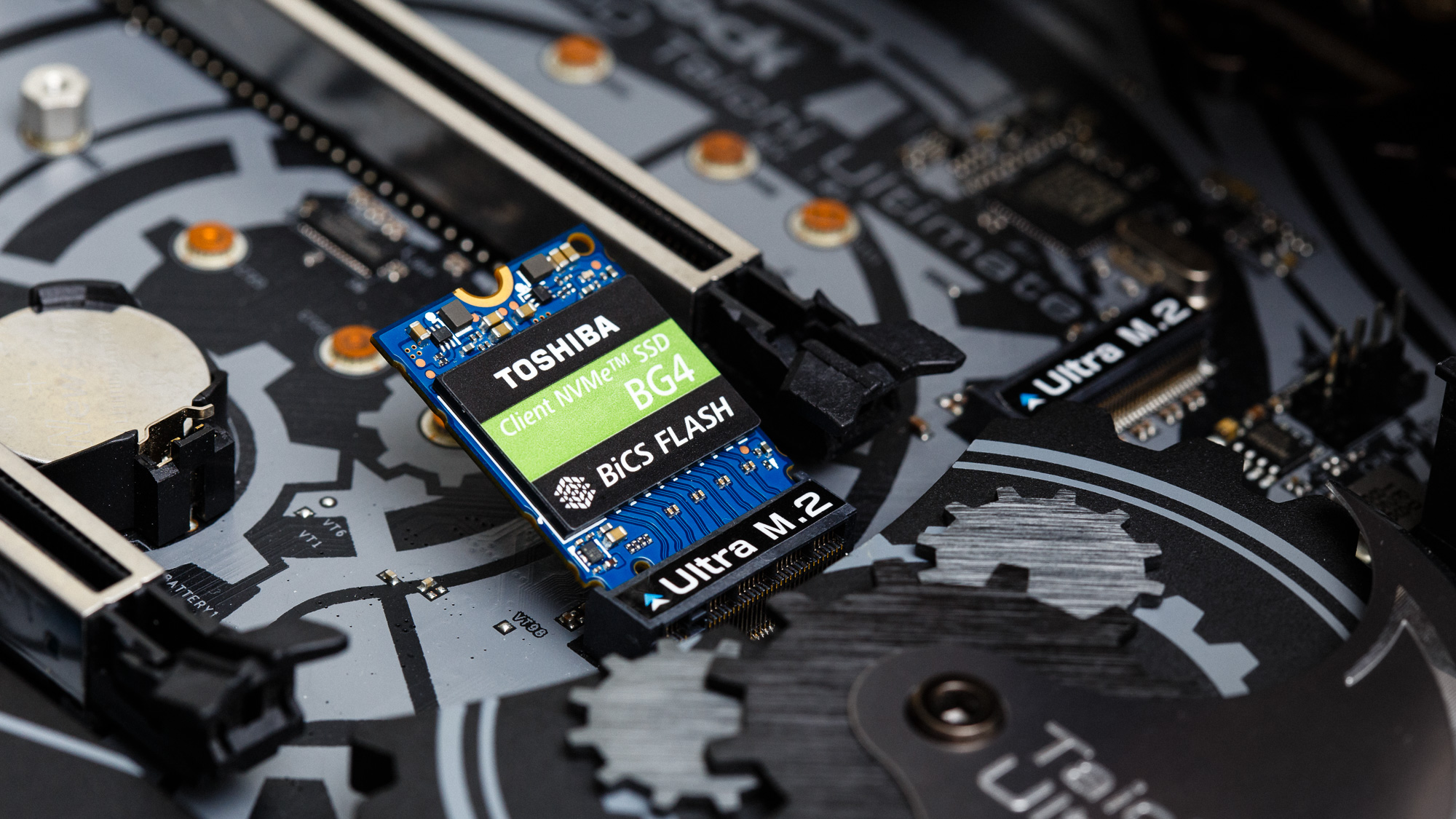Toshiba BG4 M.2 NVMe SSD Review: One Tiny, But Speedy SSD
Why you can trust Tom's Hardware
Conclusion
Toshiba Memory’s BG4 has a lot of market potential. While this super small NVMe SSD lacks a DRAM cache, it's nimble and power efficient. It brings NVMe goodness to smaller smalls and offers flexibility to OEMs on form factor choice with M.2 and BGA options as well as SED options for added security.
We didn’t have a BG3 to compare, but Toshiba claims a 20% improvement in power efficiency, which mostly stems from the company’s newest 96L BiCS4 TLC and the improved performance stats. During our testing, it hit its rated performance stats and it has enough grunt to handle most consumer workloads while trading blows with SSDs that offer twice the bandwidth, even the bigger, and badder XG6. And, it absolutely leaves SATA in the dust. What’s not to like?
Putting aside the fact that we won’t be able to purchase it off the shelves, Toshiba Memory’s BG4 is a solid little SSD. Being so small and compact, yet so large in capacity, it is the perfect choice for almost any device that needs storage. And, without the inclusion of DRAM, the company should be able to leverage in some very tempting deals for customers. We look forward to seeing what devices are to come with this little guy in the future.
Photo Credits: Tom's Hardware
MORE: Best SSDs
MORE: How We Test HDDs And SSDs
MORE: Best External Hard Drives and SSDs
Get Tom's Hardware's best news and in-depth reviews, straight to your inbox.

Sean is a Contributing Editor at Tom’s Hardware US, covering storage hardware.
-
cryoburner ReplyWith performance that is 6 times that of any SATA SSD...
Perhaps "up to six times" would be a slightly more accurate way to word that? In most real-world tasks, you are not going to see that kind of performance difference. In the game load test, it was just 8% faster than an MX500, which would be more or less unnoticeable. It fares better in some other tests, particularly synthetics, but I'm struggling to find charts showing it performing 6 times as well, and it actually performs worse in a few due to the increased latency from lacking an onboard DRAM cache. Even the sequential read and write numbers are only around 4 times those of a good SATA SSD, so I'm not sure where that number came from.
Also, while the power consumption appears good in the file copy tests, the idle efficiency is a bit below average. And being DRAM-less, that also leaves me wondering whether there might be increased power draw on other parts of the system, like the system RAM or CPU, if those are getting utilized more, though that would probably be difficult to accurately test. -
seanwebster Reply
The 6 was a mistype, meant 4 as you stated. I'll get that fixed.cryoburner said:Perhaps "up to six times" would be a slightly more accurate way to word that? In most real-world tasks, you are not going to see that kind of performance difference. In the game load test, it was just 8% faster than an MX500, which would be more or less unnoticeable. It fares better in some other tests, particularly synthetics, but I'm struggling to find charts showing it performing 6 times as well, and it actually performs worse in a few due to the increased latency from lacking an onboard DRAM cache. Even the sequential read and write numbers are only around 4 times those of a good SATA SSD, so I'm not sure where that number came from.
Also, while the power consumption appears good in the file copy tests, the idle efficiency is a bit below average. And being DRAM-less, that also leaves me wondering whether there might be increased power draw on other parts of the system, like the system RAM or CPU, if those are getting utilized more, though that would probably be difficult to accurately test.
